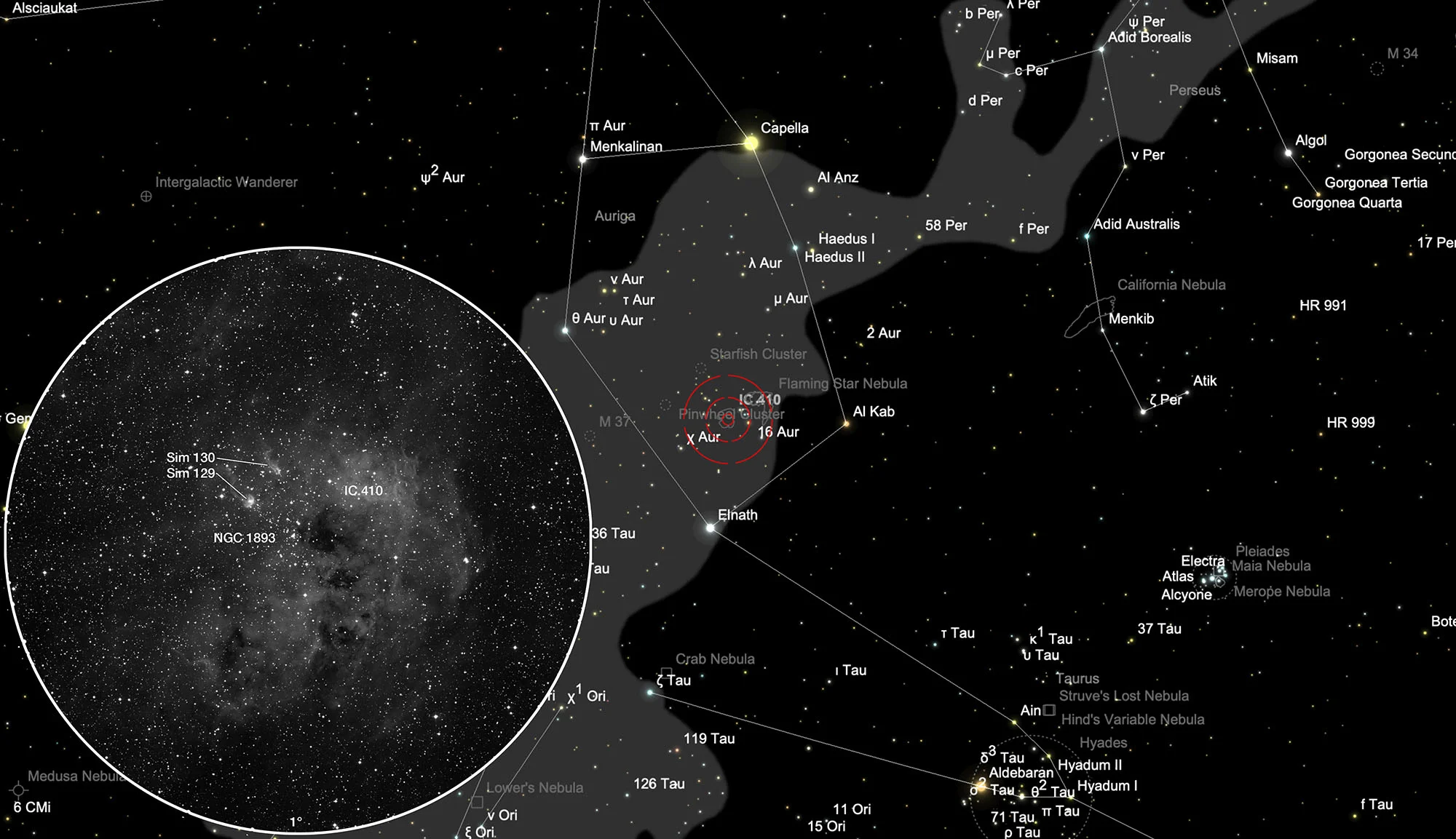Cluster NGC 1893 + Nebula IC 410
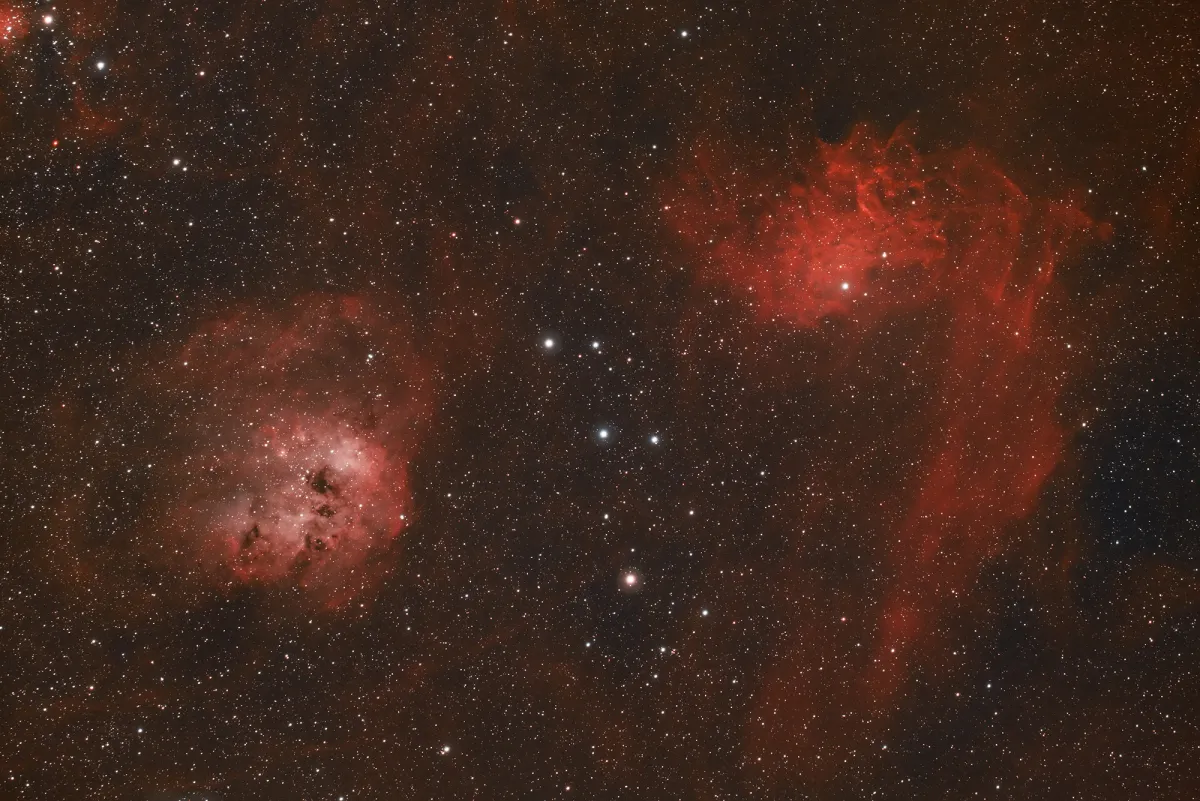
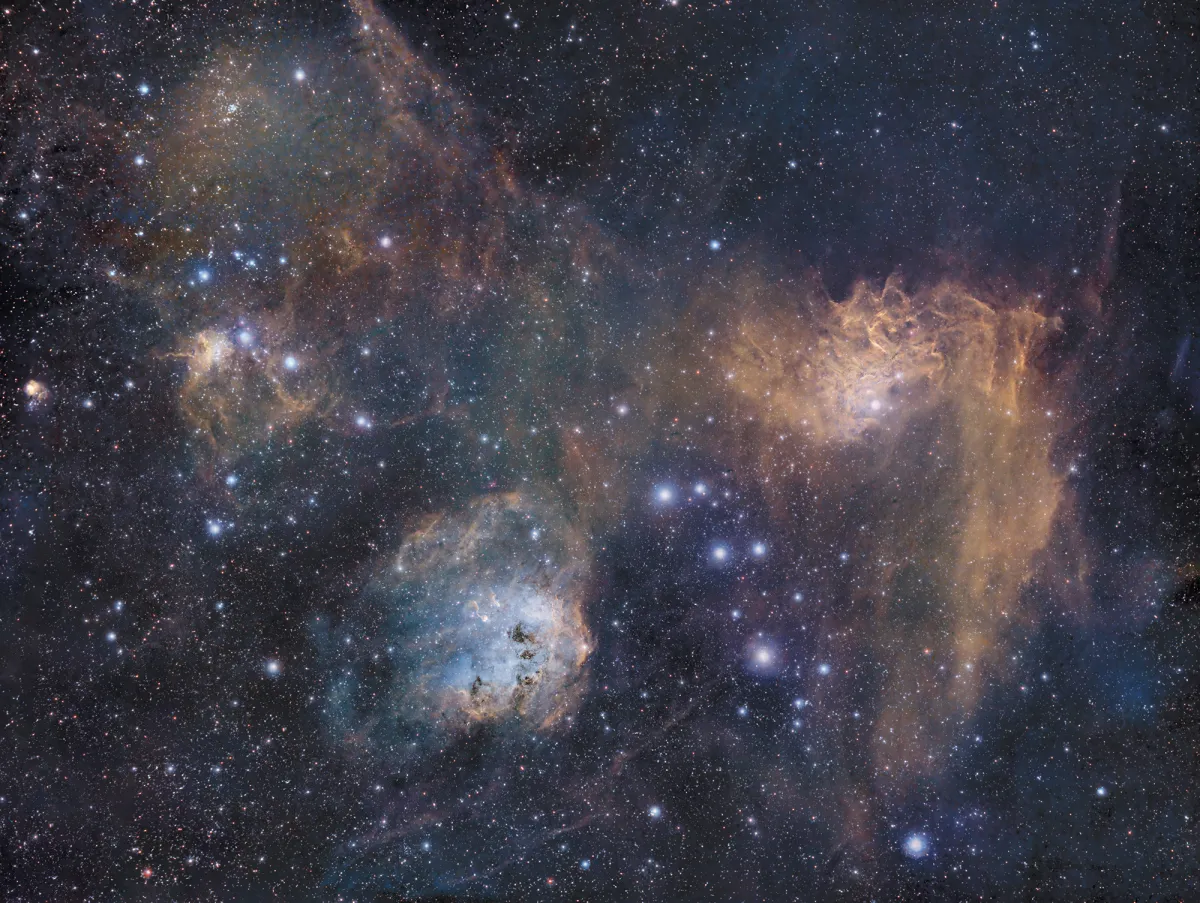
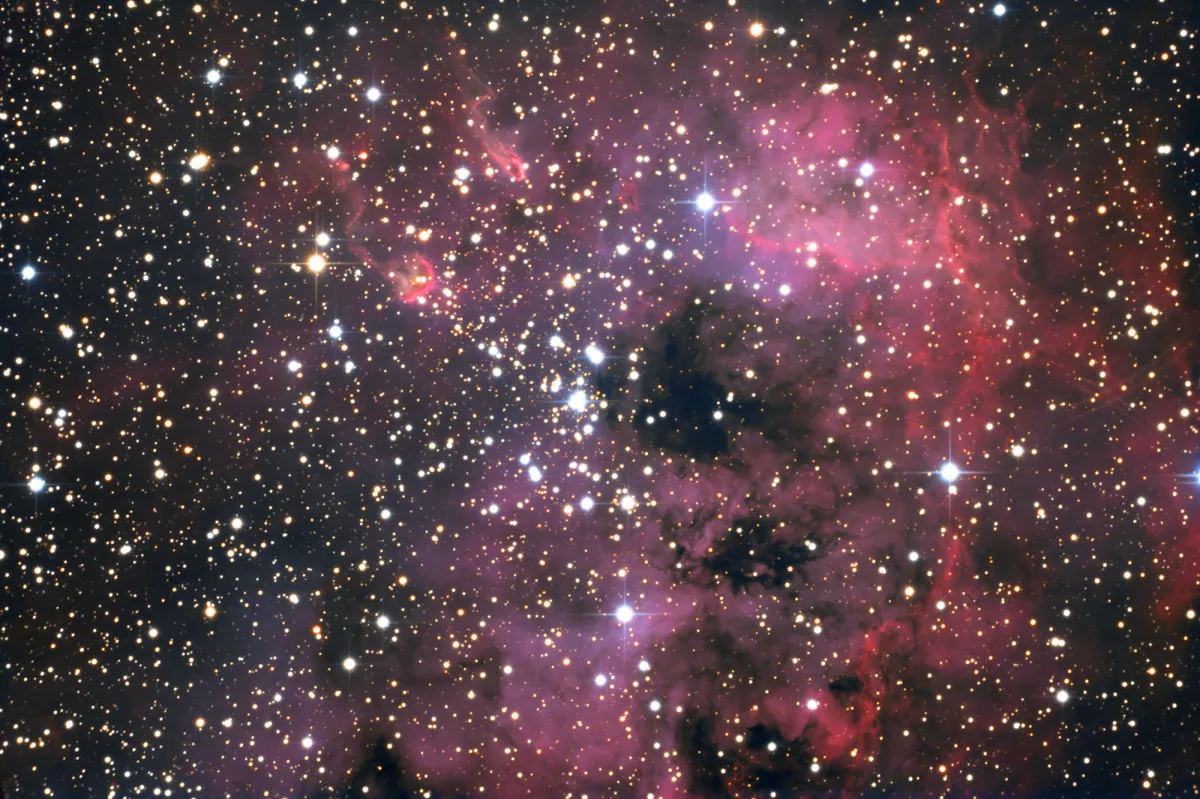
History
On 22 January 1827, John Herschel discovered the open star cluster JH 351 (GC 1101) of about 7.5 magnitudes and 10 arc minutes in diameter. Dreyer included it in his «New General Catalogue of Nebulae and Clusters of Stars» published in 1888 as NGC 1893 and added the description: «Cluster, large, rich in stars, little condensed". On 25 September 1892, the German astronomer Max Wolf aimed his telescope at that star cluster, took a picture and found a nebula that Herschel had not seen. The nebula was included as IC 410 in Dreyer's first «Index Catalog of Nebulae found in the Years 1888 to 1894» published in 1895. [196, 313, 314]
Physical Properties
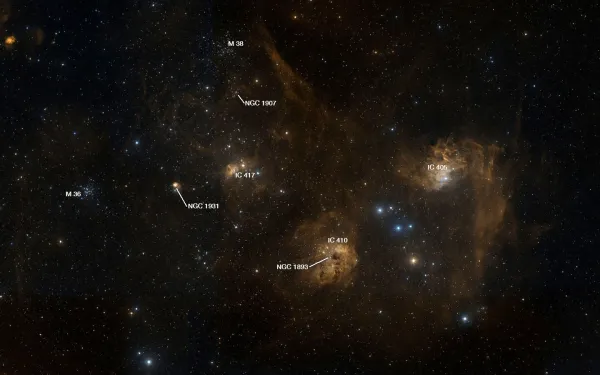
NGC 1893 is a young star cluster, estimated to be one to two million years old. It is in a different spiral arm than the sun. At a distance of around 11 kpc (around 36'000 light years) from the centre of the Milky Way, it lies on the outer edge of the Milky Way. The cluster lies in the Auriga OB2 association and is connected to the H-II region IC 410 (LBN 807, Sh2-236), which also includes the smaller nebulae Sim 129 and Sim 130, as well as dark molecular clouds. There are five O-type stars in the cluster, which are primarily responsible for the glow of the nebula. New stars are still forming in the nebula. [319, 320]
As can be seen in Fig. 2, IC 410 seems to belong to a larger H-II complex W8. At Simbad one finds measured distances of the star cluster NGC 1893 to Earth of 2.9 kpc to 3.7 kpc (about 9500 to 12'000 light years), which is much further away than the measured distance of 1500 light years from AE Aurigae in the Flaming Star Nebula (IC 405). [145]
| Name | RA | Dec | Type | vMag | Dim | MD | Dreyer Description | Identification, Remarks |
|---|---|---|---|---|---|---|---|---|
| NGC 1893 | 05 22 45.6 | +33 24 52 | OCL (II2mn) | 7.5 | 10 | 3.280 | Cl, L, Ri, lC | h 351; GC 1101; OCL 439; in IC 410; LBN 807 |
| IC 410 | 05 22 45.0 | +33 24 48 | EN+OCL | 55 × 45 | 3.600 | Dif, many st inv | LBN 807; OCL 439; around NGC1893 |
Finder Chart
IC 410 is located in the southern part of the Auriga pentagon. On 14 December it is in opposition to the Sun and crosses the meridian at local midnight. The best observation time is August to May.
Visual Observation
300 mm Aperture: In the 21 mm Ethos eyepiece the nebula is well visible with O-III filter. The dark cloud is clearly visible. The nebula somewhat resembles the Pacman Nebula. — 300 mm f/4 Popp Newton, Titlis 3020 m above sea level., SQM 21.25, 29 October 2022, 23:45, Bernd Nies
